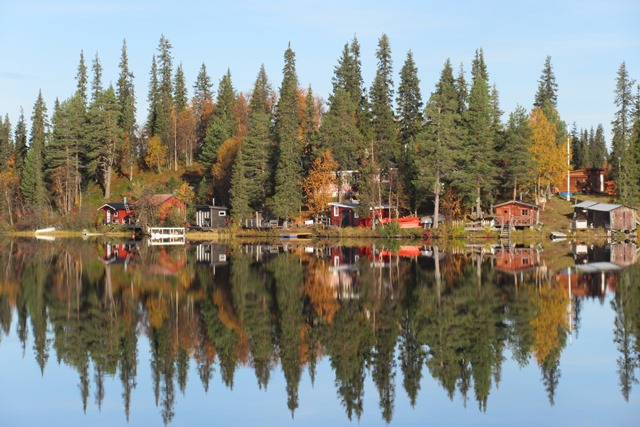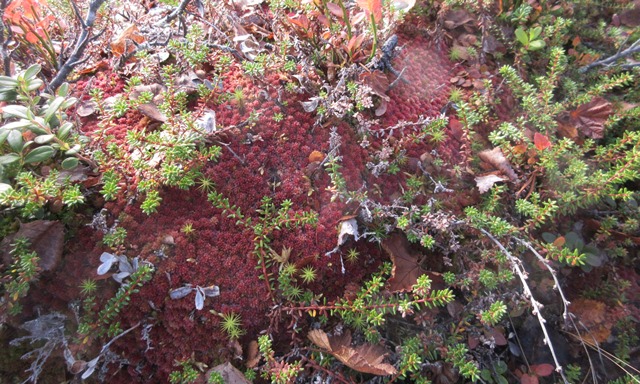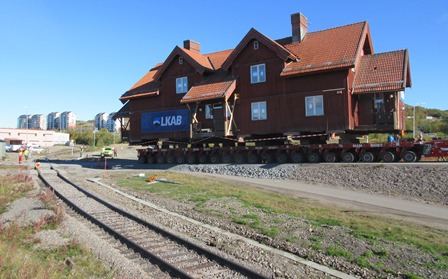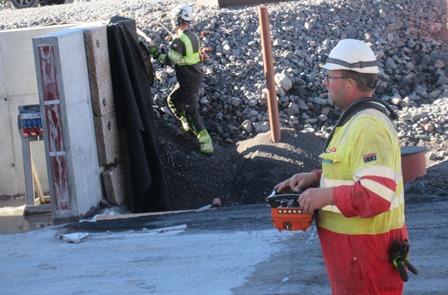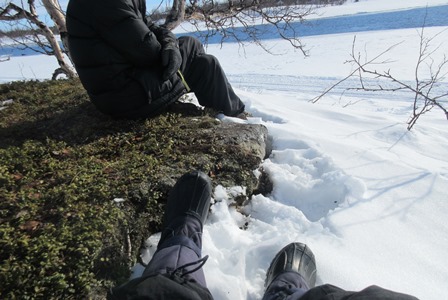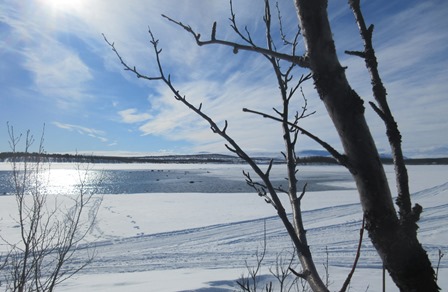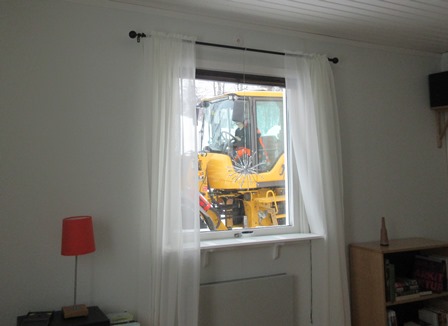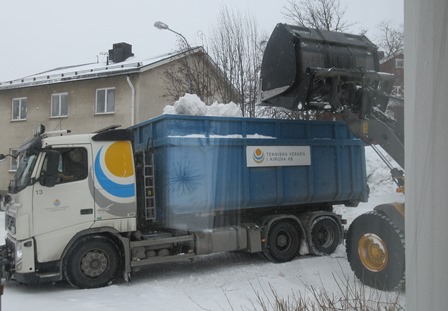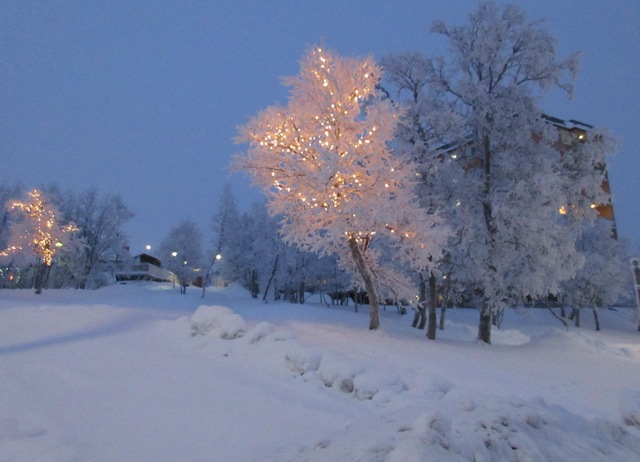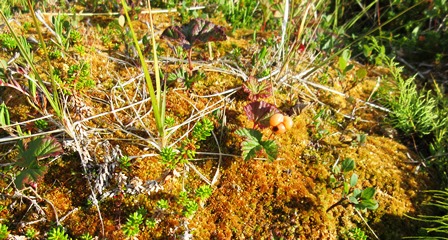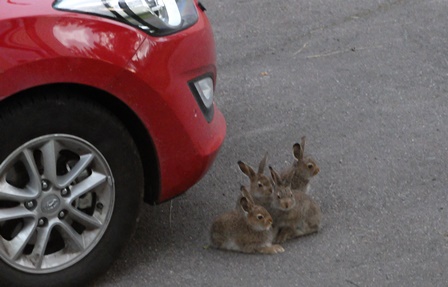We
have to sell our house. Events conspired to bring an end to this
period of our lives, running a bed and breakfast here. We’re ready
for a different focus, but we are at the stage of looking back with
both pleasure and sadness at the times we’ve had here, experiences
we’ll never forget, and people we’ve met.
It is hard to leave both the house and the landscape, but leaving
the town – that’s a bit easier, because we leave Kiruna at the
same time it’s leaving us. Shops and businesses are moving into the
new town centre this summer, and after that the original town will
become a fenced-off, no-go area while all the buildings are
demolished, and after that it will be covered with earth, and
probably grass, ‘where sheep may safely graze’ – at least until
the land finally collapses. It’s not that we don’t like the new
town, but it isn’t one with which we share a history, and it was
the old town that held the magic of its beginnings as a frontier
town.
We’ve been trying to prepare for this, psychologically for a
couple of years, and practically for about six months. We’ve been
going through our collected papers, records of activities, projects,
diaries, and interests, stored in books and pamphlets and magazines.
A lot of paper and memorabilia we’ve thrown away, but plenty still
sits there asking to be kept.
When we bought the house we had nothing much except a couple of
beds and a chair, and a large non-functioning chest freezer, all left
by the previous owners. Now we have a house full of furniture, and
most of it will have go. These are not expensive items but they have
value for us so it’s hard to say goodbye to them. Most are
secondhand, gathered piece by piece, wherever and whenever we could,
in the early days when we had a large empty house and a crazy plan to
run a bed and breakfast.
That was only ten years ago but back then the secondhand market
flourished in ways it doesn’t now. When we saw something advertised
that might be useful we rang the person direct and went to have a
look. These were our very first contacts in the town, people wanting
to sell a table, a cupboard, a chair. They were friendly and helpful,
and keen to have the furniture taken away almost regardless of the
price. When we look around the house now we don’t just see
furniture but also the people and places we bought them from.
We were lucky, the way suitable furniture appeared when we were
looking for it. We saw an ad for a large table, exactly the
dimensions we could fit in our front room and use for large groups
for breakfast. When we went to see it we realised that even folded
down it was far too large to fit in our car, and far too heavy for us
to get into the house. ‘No problem,’ said the owners, ‘where do
you live?’. They drove it over to us on a trailer and helped heave
it into the house, with a smile and no extra charge. Another family
urged us to take more items than we were buying – they were just
keen to get them out the house and didn’t ask for any payment.
To supplement these finds we regularly visited a local secondhand
shop. We were familiar and frequent customers, there most days
hanging around looking for bargains. In this way we furnished the
whole house, and the only items we bought new were beds, and a sofa,
that arrived long-distance from IKEA. Even the recycling site –
‘the dump’ – yielded some prize items – a decorative blue
bowl, for instance, which has sat on our living room table for years.
I wonder who used to own that.
We will be taking what we can back to the secondhand shop and we
hoping they get a new lease of life there. But first there is the
event of the estate agent taking photos of the house, perhaps our
furniture’s finest hour. The kitchen table got a sanding and
polishing and glows now like never before. The chairs and side tables
and bookshelves are all arranged carefully, set off with decorative
pieces and bright cushions, looking their very best. We are looking
for a new life, and so are they.
In my imagination local people are looking at houses for sale and
when they see the photos of our rooms they think, ‘we used to have
a table just like that’. And then they wonder if that
could be their table. Or their chair. Or their
cupboard. Perhaps the previous owners are intrigued to see their
house on the market again and amazed to see some of their old
furniture still in it.
People might even discover that other people in the town also
recognise furniture of theirs in our house. It might become a topic
of conversation between them – ‘do you think there’s anything
in the house that isn’t secondhand?!’, and ‘I always liked that
chair, perhaps we should have kept it?’, and ‘that cupboard
looked much better where we used to have it’. Or perhaps they will
just look wistfully at their old furniture, and keep quiet. Or maybe
they’ll see it and feel really pleased they got rid of it.
We went back to the secondhand shop. I wasn’t supposed to be
looking for things to buy, but my eye was caught by a bright yellow
flower tealight holder. Not altogether in good taste, and very
noticeable. Mainly noticeable to me because I used to have one, years
ago. I wondered what had happened to it. Could I have donated it to
the secondhand shop when we left Kiruna for a while, some years ago?
It looked more battered than my old one, but then we’ve all aged a
bit. I bought it, and brought it home.



